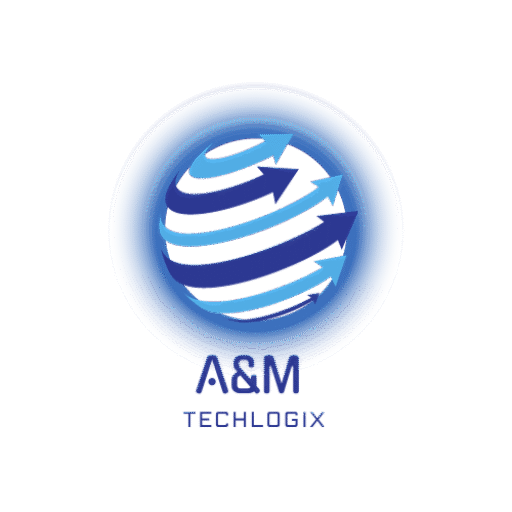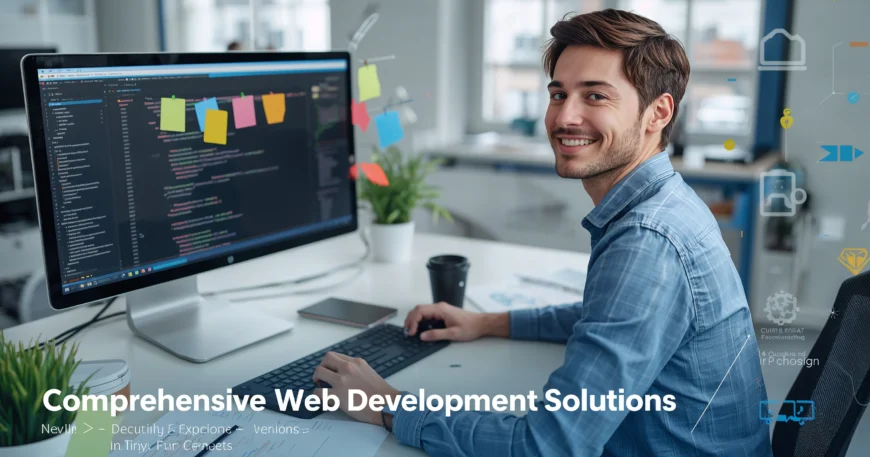In today’s digital age, the need for a robust online presence has never been more critical. Whether you are a startup looking to establish your brand or a large enterprise aiming to enhance customer engagement, having an intuitive, high-performing website is essential. This is where comprehensive web development solutions come into play, transforming ideas into seamless digital experiences that captivate users and drive business success.
Web development is not just about building websites; it’s about creating dynamic platforms that cater to users’ needs and provide an exceptional user experience (UX). By leveraging the right technologies, methodologies, and design principles, businesses can build websites that engage, convert, and retain users effectively.
Why Web Development Matters
A well-crafted website is often the first point of contact between a business and its potential customers. It is more than just a digital brochure; it serves as a key touchpoint where customers interact with the brand, find solutions to their problems, and decide whether or not to make a purchase. A seamless and responsive web experience is therefore essential for maintaining user engagement and driving conversions.
Here’s why web development plays a crucial role:
- Business Visibility and Credibility: A professional, user-friendly website increases visibility and establishes credibility. It shows potential customers that the business is serious, reliable, and technologically up-to-date.
- Improved Customer Experience: A seamless, easy-to-navigate site keeps users engaged and helps them find what they need with minimal friction.
- Increased Conversions and Revenue: A well-optimized site can lead to higher conversion rates, as users can effortlessly browse products, read services, and complete transactions.
- Mobile Responsiveness: With the growing use of smartphones, having a responsive website is essential to ensure that users can access the site from any device, offering a consistent experience across all platforms.
Key Components of Comprehensive Web Development Solutions
To build a successful website, it’s essential to cover all the key components that contribute to its functionality, performance, and user experience. Comprehensive web development solutions combine front-end and back-end technologies to create dynamic, responsive, and visually appealing websites. Here are the key aspects involved in crafting these seamless digital experiences:
1. Front-End Development (Client-Side)
Front-end development refers to the creation of the user-facing part of the website – the interface that users interact with directly. It encompasses the layout, design, content, and overall structure of the website. Effective front-end development focuses on:
- Responsive Design: Ensuring that the website adjusts seamlessly across different devices and screen sizes.
- User Experience (UX) Design: Crafting intuitive navigation, clear calls-to-action, and easy-to-read typography to enhance usability.
- Interactive Elements: Integrating interactive features like forms, sliders, and buttons to engage users and improve functionality.
- Optimization: Reducing page load times and improving site speed to ensure users can interact with the site without delays.
Popular front-end technologies include HTML5, CSS3, JavaScript, and modern frameworks like React, Vue.js, and Angular. These technologies allow developers to create dynamic, interactive websites that provide users with a rich experience.
2. Back-End Development (Server-Side)
While front-end development is about creating the visual elements of the website, back-end development focuses on the server-side aspects that ensure the website functions properly. This includes managing databases, handling user requests, and processing the data required to provide content to users. Key back-end components include:
- Database Management: Setting up and managing databases that store user data, product information, and other business-critical information.
- Server-Side Logic: Writing the code that runs on the server to process requests, such as form submissions, account logins, or payment processing.
- APIs (Application Programming Interfaces): Building and integrating APIs that allow different systems and applications to communicate with each other.
- Security: Implementing security protocols like encryption, authentication, and authorization to safeguard user data and protect against potential threats.
Common back-end technologies include Node.js, PHP, Python, Ruby on Rails, and Java, along with databases like MySQL, PostgreSQL, and MongoDB.
3. Content Management Systems (CMS)
A Content Management System (CMS) allows businesses to manage their website’s content easily, without requiring advanced technical knowledge. CMS platforms provide a user-friendly interface for updating text, images, videos, and other content on the site. Popular CMS solutions include:
- WordPress: A highly customizable CMS used for creating blogs, business websites, and e-commerce platforms.
- Shopify: A specialized CMS for building e-commerce websites with features tailored for online stores.
- Joomla: A flexible CMS that supports complex websites, including membership sites and community portals.
- Drupal: A robust, open-source CMS often used for large-scale websites and web applications that require advanced functionality.
Choosing the right CMS allows businesses to manage their content more efficiently and ensures their website is easy to update and maintain.
4. E-Commerce Integration
For businesses looking to sell products online, e-commerce integration is a vital aspect of web development. An e-commerce platform needs to offer features like secure payment gateways, product catalogs, customer accounts, and shopping cart systems to provide users with a seamless shopping experience. Some key components include:
- Product Pages: Creating detailed product pages with images, descriptions, prices, and specifications.
- Shopping Cart and Checkout: Developing an easy-to-use shopping cart and streamlined checkout process that allows customers to purchase items quickly and securely.
- Payment Gateway Integration: Implementing secure payment methods like PayPal, Stripe, and credit card processing to enable smooth transactions.
- Inventory Management: Ensuring that the e-commerce platform integrates with inventory systems to track stock levels and manage orders.
Popular e-commerce platforms include WooCommerce (for WordPress), Magento, Shopify, and BigCommerce.
5. Mobile Optimization
With the rise of mobile internet usage, optimizing your website for mobile devices is a necessity. Mobile optimization ensures that your website performs well on smartphones and tablets, providing an experience tailored to smaller screens and touch-based navigation. Key strategies include:
- Responsive Web Design: Ensuring the website automatically adjusts to different screen sizes, providing a user-friendly experience across devices.
- Mobile-First Design: Prioritizing mobile usability when designing the website’s layout and functionality, ensuring that it performs well on mobile before scaling up for larger screens.
- Touch-Friendly Interfaces: Designing clickable buttons, forms, and navigation menus that are easy to use on touchscreens.
6. SEO Optimization
Search Engine Optimization (SEO) is critical to ensure that your website ranks well on search engines like Google, making it easier for users to find your site. Effective SEO strategies include:
- Keyword Optimization: Using relevant keywords in page titles, headings, and content to improve search rankings.
- Mobile Optimization: Ensuring the website is mobile-friendly to improve SEO rankings.
- Fast Load Times: Optimizing images and code to reduce page load times, which can impact both user experience and search rankings.
- Quality Content: Creating high-quality, informative content that provides value to users and encourages backlinks from other sites.
A website that is SEO-optimized will not only rank higher in search engine results but also provide a better user experience, leading to higher traffic and engagement.
7. Security and Maintenance
Once a website is launched, maintaining its security and performance is crucial. Security measures should be implemented throughout the development process and regularly updated after launch. This includes:
- SSL Encryption: Ensuring the website uses HTTPS to secure data transmission and protect user privacy.
- Regular Backups: Creating backups of the website’s data to safeguard against potential data loss.
- Routine Updates: Keeping software, plugins, and security patches up to date to protect against vulnerabilities.
- Firewalls and Anti-Malware: Implementing firewalls and anti-malware tools to prevent attacks and ensure a secure environment for users.
8. Performance and Speed Optimization
Website speed is a major factor in user experience. A slow-loading website can drive users away, leading to a high bounce rate and a loss in conversions. Performance optimization includes:
- Image Compression: Reducing image sizes without compromising quality to speed up loading times.
- Lazy Loading: Implementing lazy loading for images and videos, which only loads elements when they come into the user’s viewport.
- Minification: Compressing and minifying CSS, JavaScript, and HTML files to reduce file sizes and improve site speed.
Conclusion
Crafting seamless digital experiences requires a comprehensive approach to web development, incorporating a variety of technologies, methodologies, and strategies to create a website that meets both business goals and user expectations. From front-end design to back-end development, CMS integration, e-commerce functionality, and SEO optimization, every aspect of web development plays a crucial role in ensuring that a website is fast, secure, and user-friendly.
By partnering with a professional web development team, businesses can ensure that they stay ahead of the competition, build strong online relationships with users, and position themselves for long-term success in the digital world. Whether you are building a new website or revamping an existing one, comprehensive web development solutions are essential to crafting a website that delivers a seamless digital experience.




